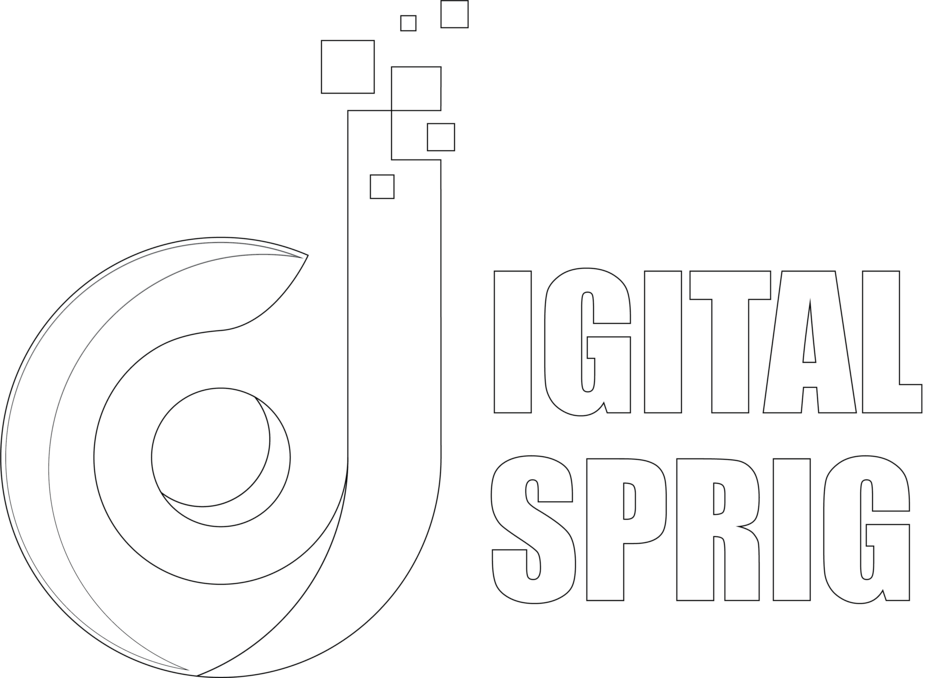List building is an crucial strategy for anyone looking to grow their business or reach a wider audience. You will discover the power of email marketing and its ability to create meaningful connections with your audience. In this guide, you’ll learn effective techniques to attract subscribers, engage them with valuable content, and ultimately convert them into loyal customers. Don’t underestimate the impact of a well-curated email list—it can be the key to your success!
Key Takeaways:
- Focus on offering valuable content or incentives to attract subscribers, such as exclusive tips, discounts, or downloadable resources.
- Utilize multiple channels to promote your email list, including social media, website pop-ups, and partnerships, to maximize reach.
- Regularly engage with your subscribers through targeted email campaigns to build trust and maintain a strong relationship with your audience.
Understanding the Types of Email Lists
For effective email marketing, it’s necessary to know the different types of email lists, which can help you tailor your approaches. Here’s a breakdown of the main types:
| Newsletter Lists | Regular updates and announcements |
| Transactional Lists | Triggered after specific actions |
| Promotional Lists | Deal and product offers |
| Segmentation Lists | Targeted based on behavior |
| Event Lists | Information on upcoming events |
Newsletter Lists
Understanding newsletter lists is vital for maintaining communication with your audience. They consist of subscribers who are interested in receiving regular updates, news, and valuable content from your brand. By creating engaging newsletters, you can build relationships and keep your audience informed about your latest endeavors.
Transactional Lists
To maximize your email marketing strategy, consider leveraging transactional lists. These lists comprise individuals who receive messages triggered by specific actions, such as making a purchase or signing up for a service. They often include important order confirmations, receipts, and updates pertinent to past transactions.
Plus, the advantage of transactional emails lies in their high open rates, as people typically expect them following an action. They provide positive engagement with your brand but must be handled cautiously. Avoid sending excessive promotional content through these lists; doing so can lead to negative perceptions and even unsubscribes. Keep your messages relevant and helpful to ensure strong customer interactions.
Key Factors for Building an Email List
Some of the key factors to consider when building an email list include:
- Identifying your target audience.
- Creating a compelling value proposition.
- Utilizing sign-up incentives.
- Engaging with your subscribers.
- Segmenting your list for targeted campaigns.
Perceiving these elements can significantly enhance your email list growth and engagement.
Target Audience Identification
An effective email list starts with understanding who your target audience is. By identifying their demographics, preferences, and pain points, you can tailor your content and offerings to better meet their needs. This ensures that you attract subscribers who find value in what you provide, ultimately leading to a more engaged email list.
Value Proposition
If you want to convert visitors into subscribers, you must clearly communicate your value proposition. This is what sets you apart from the competition and tells potential subscribers why they should join your email list. It could be exclusive content, special discounts, or actionable insights that resonate with your audience’s interests.
Plus, a strong value proposition highlights the benefits subscribers will receive, such as exclusive offers or valuable insights. Make sure to clearly articulate what makes your brand unique and how your emails will provide significant benefits to your readers. Failing to convey this could result in missed opportunities and decreased subscriber interest. Crafting a persuasive value proposition is important for boosting your subscription rates and ensuring a responsive audience.
The Ultimate Guide To Building An Email List
Unlike social media platforms, your email list is a powerful asset that you own. In this step-by-step guide, you’ll learn how to effectively build and grow your email list. Follow these necessary steps to ensure your list is not only growing but engaging with your audience consistently.
| Steps | Actions |
|---|---|
| Define Your Audience | Identify who your ideal subscribers are and what they want. |
| Choose the Right Tools | Select an email marketing platform and tools that fit your needs. |
| Create Compelling Lead Magnets | Offer valuable content in exchange for email sign-ups. |
| Promote Your List | Use social media, your website, and other channels to attract subscribers. |
Choosing the Right Tools
Tools play a vital role in building your email list effectively. Start by selecting an email marketing platform that suits your needs, ensuring it offers automation, analytics, and user-friendly design. Additionally, integration with your website and social media can enhance your sign-up processes, boosting convenience for your subscribers.
Creating Compelling Lead Magnets
Tools are necessary for crafting lead magnets that entice your audience to subscribe. You need to provide something of value, like eBooks, checklists, or exclusive resources that address specific pain points. This makes your offer irresistible and encourages sign-ups.
Step-by-step, creating compelling lead magnets requires you to understand your audience’s needs and preferences. Begin by conducting research to identify the type of content they find valuable. Next, design your lead magnet to be visually appealing and easy to digest. Finally, promote it through various channels, ensuring that your offer stands out in a crowded field. Focus on delivering immense worth to your subscriber, as this can foster trust and lay the foundation for a long-term relationship.
Tips for Growing Your Email List
After defining your target audience, focus on optimizing your strategies to increase your email subscribers. Consider these tips:
- Create compelling content that provides value to your audience.
- Offer enticing lead magnets such as e-books or discounts.
- Host webinars or live events to engage directly.
- Leverage referral programs to encourage sharing.
Recognizing the importance of effective tactics can significantly boost your list growth. For more insights, check out How to Build an Email List from Scratch | 10 Ideas That Work.
Effective Landing Pages
Growing your email list effectively starts with creating dedicated landing pages that convert visitors into subscribers. Your landing pages should be simple yet persuasive, highlighting the benefits of subscribing. Use eye-catching designs and clear calls to action to entice potential subscribers.
Utilizing Social Media
Little efforts on social media can dramatically enhance your email list growth. By using platforms where your audience spends time, you can drive engagement and attract new subscribers.
Tips for utilizing social media effectively include sharing valuable content, promoting your lead magnets, and interacting with followers regularly. Utilize targeted ads to reach specific demographics while ensuring your messaging is clear and enticing. Consider involving your audience by hosting contests or giveaways that require them to subscribe to your email list. This not only increases your subscriber count but also fosters a sense of community around your brand.
Pros and Cons of Different Email List Strategies
Your strategy for building an email list can greatly affect your overall effectiveness. Understanding the pros and cons of various methods will guide you to make informed decisions that suit your goals. Below is a breakdown to help you assess different approaches:
| Strategy | Pros and Cons |
|---|---|
| Organic Growth | Pros: Cost-effective, builds a loyal audience. Cons: Slow growth, requires consistent effort. |
| Paid Advertising | Pros: Rapid growth, targeted audience access. Cons: Can be expensive, depends on ad performance. |
| Lead Magnets | Pros: High conversion rates, provides value. Cons: Time-consuming to create, sometimes low engagement. |
| Social Media Sign-ups | Pros: Access to a wider audience, easy integration. Cons: Less control over audience, potential for fake sign-ups. |
| Referral Programs | Pros: Cost-effective, leverages existing customers. Cons: Needs initial loyal base, may hinder quality. |
| Purchasing Lists | Pros: Immediate access to contacts. Cons: Low engagement, often results in spam complaints. |
Organic Growth vs. Paid Advertising
Little do many marketers know that the choice between organic growth and paid advertising can shape the trajectory of your email list. Organic growth nurtures authentic relationships with your subscribers, while paid advertising can yield faster results but may attract less engaged audiences. Carefully consider your resources and long-term goals when choosing between these methods.
Segmentation vs. General Lists
You have the opportunity to enhance your email marketing efforts by deciding between segmentation and general lists. Segmenting your audience allows for tailored communications that resonate with specific interests, improving engagement. In contrast, general lists can be easier to manage but may lead to lower open rates and overall effectiveness.
To maximize your email marketing strategy, leveraging segmentation can lead to significantly better outcomes. By dividing your audience based on criteria such as behavior, preferences, or demographics, you can send targeted messages that appeal directly to their interests. In contrast, general lists may seem simpler but often result in less engagement and higher unsubscribe rates due to a lack of personalization. Thus, prioritizing segmentation empowers you to create more meaningful connections with your subscribers, driving higher conversions and fostering brand loyalty.

Best Practices for Email List Management
All successful email marketers understand the importance of effective list management. By staying organized and proactive, you can improve engagement rates and maintain a healthy subscriber base. You’ll want to prioritize your audience’s interests and preferences, ensuring that your emails consistently deliver value. Incorporating best practices such as regular maintenance and adhering to compliance regulations will contribute to a successful email marketing strategy that fosters connections and drives conversions.
Regular List Maintenance
Little attention to your email list can lead to a decline in engagement and deliverability. Regularly review your subscriber list, removing inactive users and updating information to keep it fresh. This practice will help you focus on optimizing campaigns for those genuinely interested in your content.
Compliance with Regulations
For email marketing to be effective, you must comply with various regulations, such as GDPR and CAN-SPAM. These laws protect your subscribers’ privacy and impose strict requirements around consent and data usage. Non-compliance can lead to hefty fines, damage your reputation, and harm your business.
It is crucial to maintain compliance with these regulations by obtaining clear consent before sending emails and providing easy options for subscribers to opt out or manage their preferences. Implement proper verification processes to ensure your audience genuinely wants your content, using double opt-in methods to reinforce trust. Fostering a positive relationship with your subscribers will help you build a loyal audience while maintaining a good standing with regulatory authorities. Failure to comply can have serious consequences, including financial penalties and loss of credibility in your industry.
Final Words
Conclusively, building an email list is an invaluable asset for your business or project. By implementing the strategies outlined in this guide, you empower yourself to connect directly with your audience, foster relationships, and drive conversions. Ensure you continuously engage with your subscribers and provide them with valuable content that resonates with their needs. The time and effort you invest in growing your email list will pay dividends as you cultivate a loyal community around your brand.
FAQ
Q: Why is building an email list important for my business?
A: An email list enables you to directly reach and communicate with your audience. Unlike social media platforms that rely on algorithms, an email list provides more control over how you interact with your subscribers. It allows you to send tailored content that can lead to increased engagement, customer retention, and ultimately, sales. Moreover, email marketing has consistently shown a strong return on investment (ROI), making it a valuable tool for business growth.
Q: What are some effective ways to grow my email list?
A: There are various strategies to grow your email list. Some effective methods include offering lead magnets (like ebooks, checklists, or exclusive content) in exchange for email signup, using sign-up forms on your website and social media platforms, hosting webinars or online events, and utilizing pop-up forms. Additionally, creating engaging and valuable content can entice your audience to subscribe. You can also leverage referral programs, encouraging existing subscribers to recommend your list to others.
Q: How can I keep my email list engaged over time?
A: Keeping your email list engaged involves consistent and value-driven communication. Regularly send newsletters that include informative articles, updates about your products/services, and exclusive offers. Personalizing your emails based on user behavior and preferences enhances engagement as well. It’s also a good idea to segment your list to send targeted content to specific groups. Finally, encourage feedback and interaction, as engagement increases when subscribers feel involved and valued.


